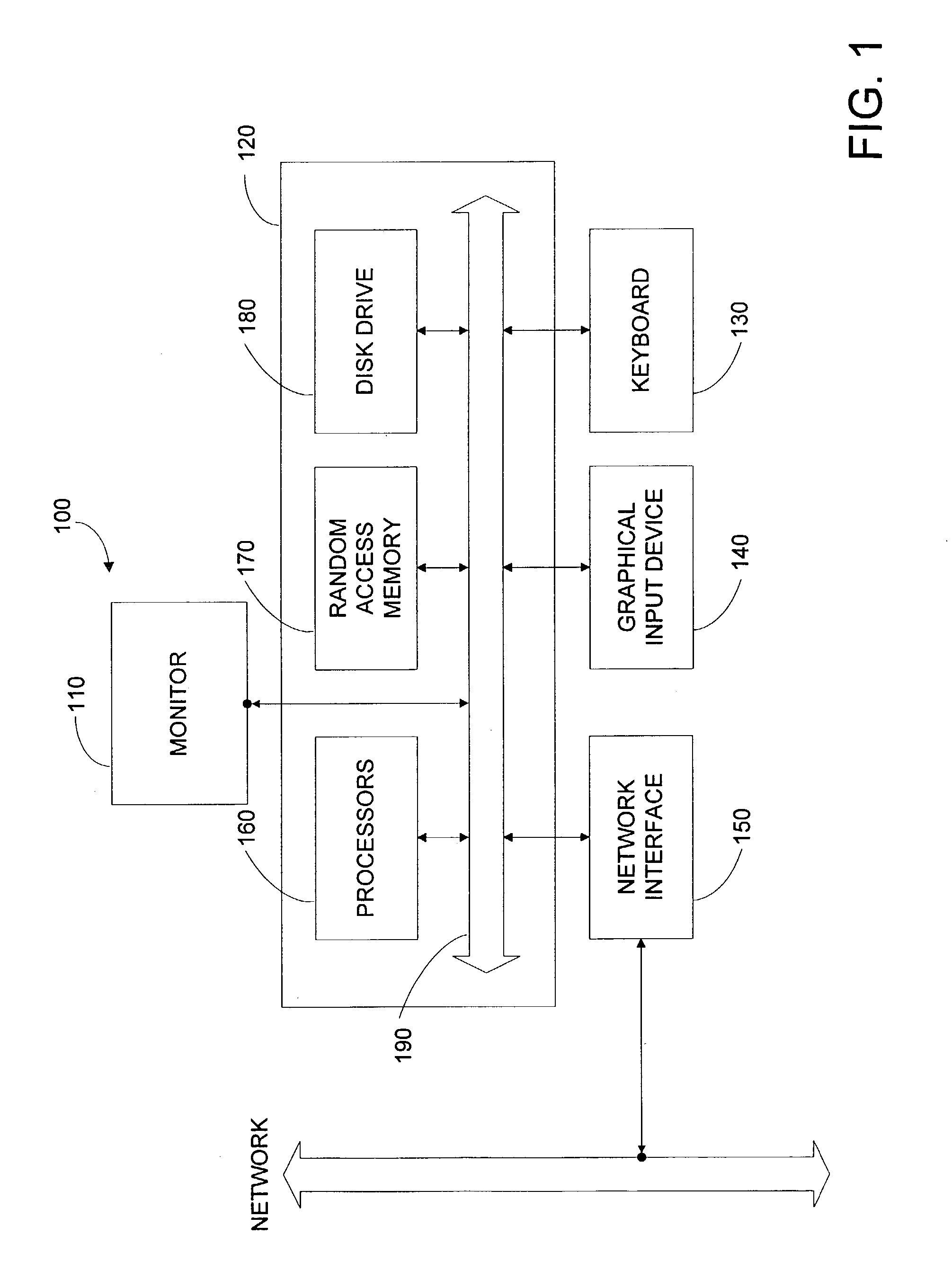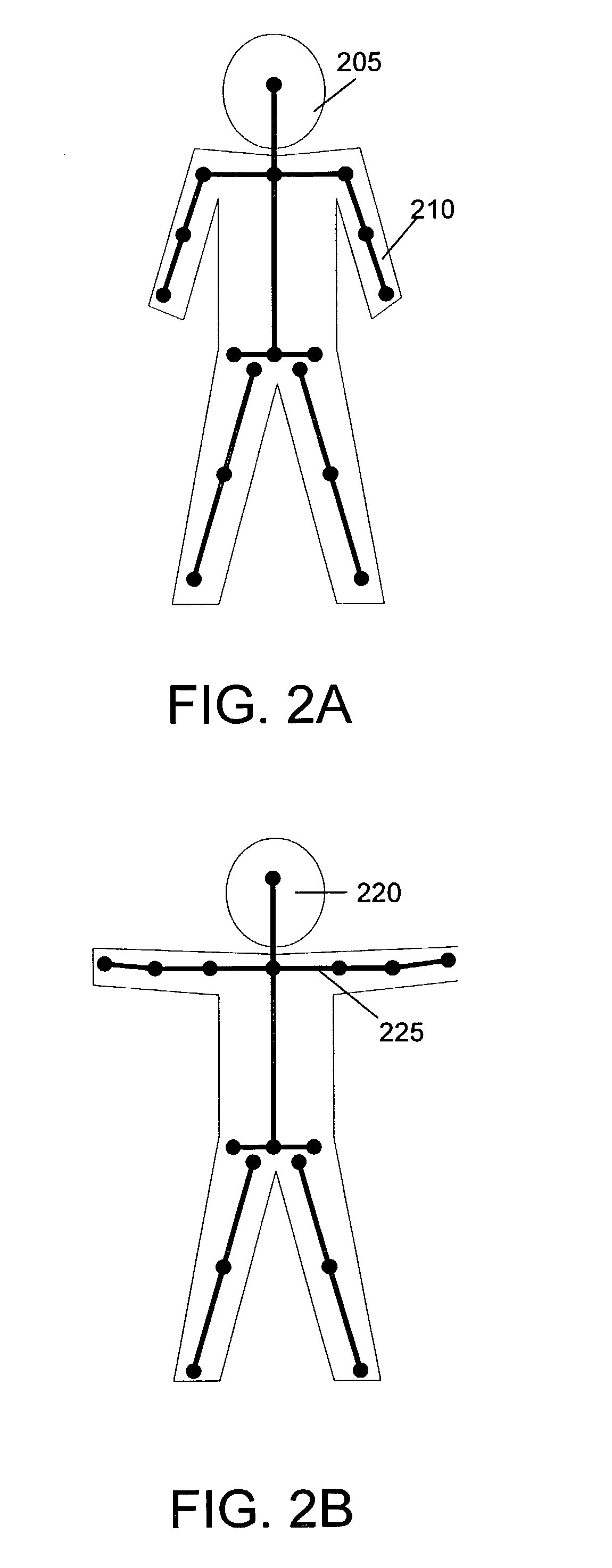Statistical dynamic collisions method and apparatus utilizing skin collision points to create a skin collision response
a collision response and dynamic collision technology, applied in the field of computer graphics, can solve the problems of stiff and “puppet-like” animation resulting from kinematic transformations, the computer model of a character is often extremely complex, and the kinematic transformations perform particularly poorly with “soft body” objects
- Summary
- Abstract
- Description
- Claims
- Application Information
AI Technical Summary
Benefits of technology
Problems solved by technology
Method used
Image
Examples
Embodiment Construction
[0037]FIG. 1 illustrates an example computer system 100 capable of implementing an embodiment of the invention. Computer system 100 typically includes a monitor 110, computer 120, a keyboard 130, a user input device 140, and a network interface 150. User input device 140 includes a computer mouse, a trackball, a track pad, graphics tablet, touch screen, and / or other wired or wireless input devices that allow a user to create or select graphics, objects, icons, and / or text appearing on the monitor 110. Embodiments of network interface 150 typically provides wired or wireless communication with an electronic communications network, such as a local area network, a wide area network, for example the Internet, and / or virtual networks, for example a virtual private network (VPN).
[0038]Computer 120 typically includes components such as one or more general purpose processors 160, and memory storage devices, such as a random access memory (RAM) 170, disk drives 180, and system bus 190 interc...
PUM
 Login to View More
Login to View More Abstract
Description
Claims
Application Information
 Login to View More
Login to View More - R&D
- Intellectual Property
- Life Sciences
- Materials
- Tech Scout
- Unparalleled Data Quality
- Higher Quality Content
- 60% Fewer Hallucinations
Browse by: Latest US Patents, China's latest patents, Technical Efficacy Thesaurus, Application Domain, Technology Topic, Popular Technical Reports.
© 2025 PatSnap. All rights reserved.Legal|Privacy policy|Modern Slavery Act Transparency Statement|Sitemap|About US| Contact US: help@patsnap.com



